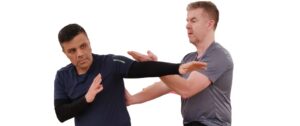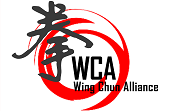The Art of Kiu Sao: Mastering the Martial Skill

Kiu Sao, a fundamental concept in martial arts, is a term that holds a special place in the heart of martial artists around the world. It represents a crucial aspect of self-defense and combat techniques, emphasizing the art of intercepting an opponent’s attack. In this article, we will explore the essence of Kiu Sao, its principles, and how to train in this martial skill.
Understanding Kiu Sao
Kiu Sao, often spelled as “Qi Sao” or “Chi Sao,” is a concept rooted in traditional Chinese martial arts, particularly in Wing Chun and other similar systems. The term itself can be translated to mean “energy hand” or “sticky hands.” Kiu Sao is primarily focused on developing sensitivity, reflexes, and the ability to read an opponent’s movements and intentions.
Principles of Kiu Sao
Sensitivity: The cornerstone of Kiu Sao is sensitivity. It’s about developing an acute awareness of your opponent’s movements, pressure, and intentions through tactile contact. This heightened sensitivity allows you to respond swiftly and effectively.
Relaxation: Tension in your body can hinder your ability to feel your opponent’s energy and react appropriately. Kiu Sao training emphasizes relaxation, allowing you to move fluidly and maintain contact without unnecessary muscle tension.
Centerline Control: The centerline, an imaginary line that runs vertically through the body’s center, is crucial in martial arts. Kiu Sao teaches practitioners to control the opponent’s centerline, making it difficult for them to attack effectively while maintaining their own.
Economy of Motion: In Kiu Sao, every movement is precise and efficient. Unnecessary or exaggerated motions can create openings for your opponent. The art aims to minimize wasted energy and maximize effectiveness.
Simultaneous Attack and Defense: Kiu Sao practitioners are taught to intercept and counter an opponent’s attack simultaneously. This dual-focus on offense and defense makes it a potent martial art for self-defense and combat situations.
Training in Kiu Sao
Kiu Sao training is a dynamic and interactive process. Here are some key elements of training in this martial skill:
Drills and Techniques: Training begins with basic drills that involve maintaining tactile contact with an opponent. These drills help you develop sensitivity, understanding of centerline control, and the ability to react swiftly.
Chi Sau Practice: Chi Sau, or “sticking hands,” is a core training method in Kiu Sao. Practitioners engage in controlled sparring, where the emphasis is on maintaining contact with the opponent’s arms while executing various techniques.
Reflex Development: Kiu Sao helps improve your reflexes by constantly challenging your ability to respond to your opponent’s movements. Repetition of drills and sparring is essential to enhance your reflexes.
Application in Real-Life Scenarios: Ultimately, the goal of Kiu Sao training is to apply these skills in real-life self-defense or combat situations. This requires a deep understanding of the principles and constant practice.
Continuous Improvement: Kiu Sao is not something you master overnight. It’s a lifelong journey that requires dedication and continuous improvement. Even advanced practitioners continue to refine their skills and deepen their understanding of the art.
Conclusion
Kiu Sao is a martial art skill that goes beyond physical strength and speed. It’s about developing sensitivity, adaptability, and the ability to intercept an opponent’s attacks effectively. By embracing the principles of Kiu Sao and committing to regular training, individuals can develop a profound martial skill that is not only effective for self-defense but also deeply rewarding as a form of personal growth and discipline. As the saying goes, “To win without fighting is the highest skill.” Kiu Sao exemplifies this principle by allowing practitioners to control and redirect aggression while maintaining a peaceful mindset.
